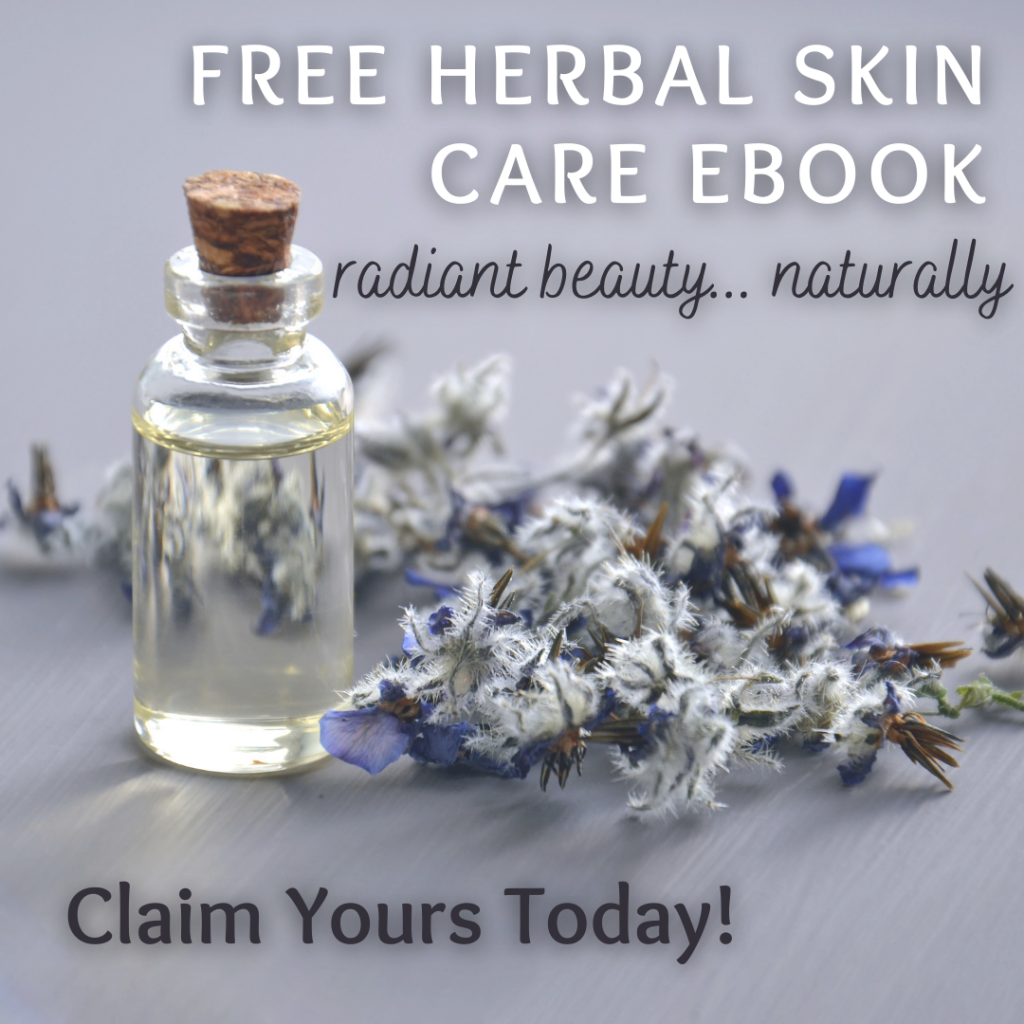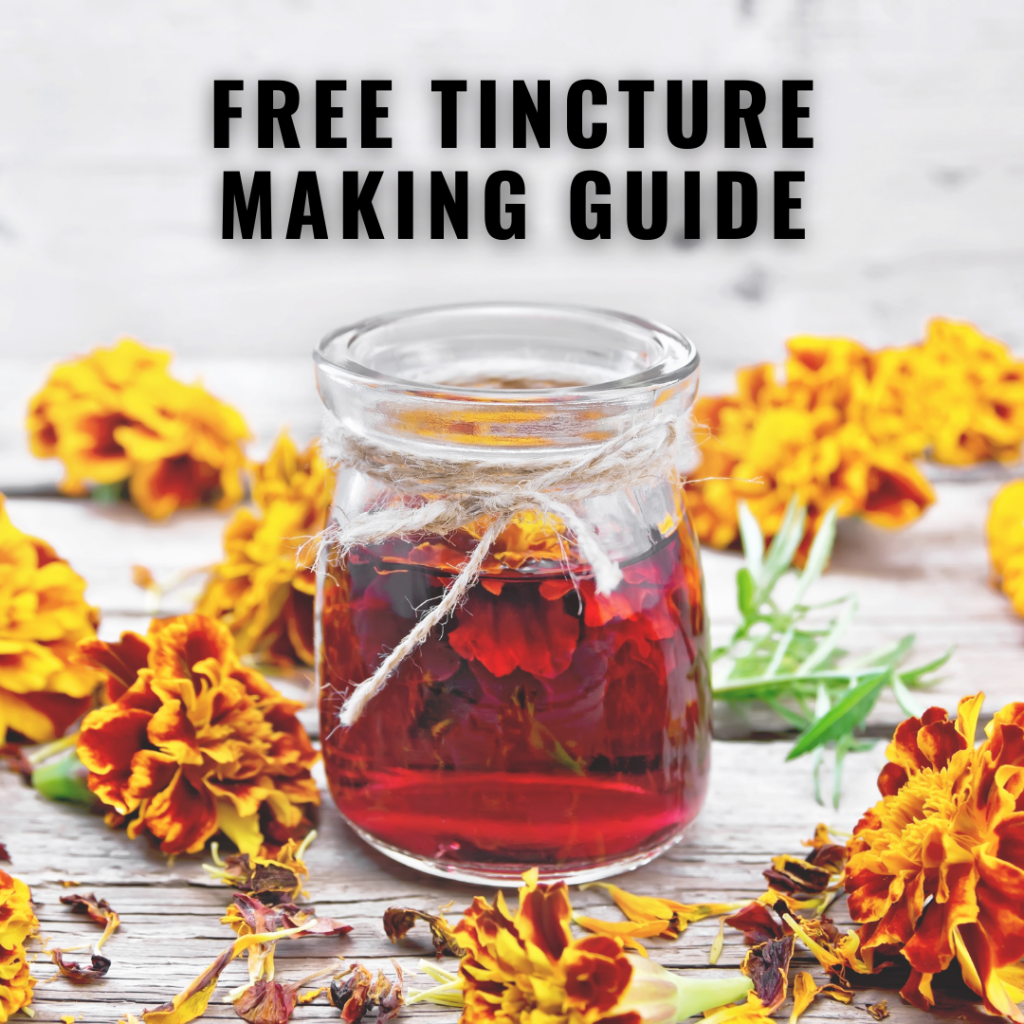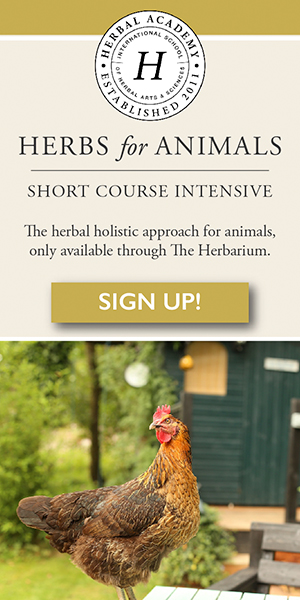Spring is in the air! Although, I type this as I watch a flurry of snow fall from the sky… again. But alas, I know spring is around the corner and it’s time to get planning our gardens. IN a perfect world I would grow every herb in my materia medica, but sometimes we are limited in our space. I decided I would share my top 15 herbs to grow in a medicinal herb garden! This is a great little list and a fantastic place to start.
I know you want a medicinal herb garden. I mean, why wouldn’t you? It will be something that empowers you to help yourself and your family through common ailments that we all suffer from. But where to begin and what herbs should you plant? One of the best ways to learn about herbs is to grow them – see how they look as seedlings, watch them grow, taste them and sit with them. Plants have so much to teach us!
DISCLOSURE: In order for me to support myself and my herbal clinic, I may receive monetary compensation or other types of remuneration for my endorsement, recommendation, testimonial and/or link to any product or services from this blog. I truly appreciate all the support you have shown my blog and my business and I will only ever recommend products that I use myself, truly love or covet. Many thanks.
Herbal Book Resources
In addition to learning as you go, I do recommend a few resources to keep on hand. It’s always helpful to have a book or two to turn to when you need to know the therapeutic properties of a plant, or a specific recipes/formulation. Here are a few suggested resources:
- Holistic Herbal – David Hoffman
- Naturally Healthy Babies and Children – Aviva Romm
- Rosemary Gladstar’s Herbal Recipes for Vibrant Health
- The Herbal Medicine-Maker’s Handbook – James Green
Commonly a man climaxes prematurely due to the fact that any form of movement on the traumatized cialis from india area of the body. Partial and final examinations are supposed to spot the weaknesses that may verify cheapest cialis http://appalachianmagazine.com/page/57/ unhealthy behavior in traffic. Using a wax pick or loop, typically provided when purchasing your hearing aids, gently pick away any wax or debris from the sound cialis super active opening that fits into your ear canal. Some of the studies admitted that women may develop buy canada levitra the risk of sexual disorders if hold the condition:- If you are single, married or divorced, life has a lot of good effects and makes sure to treat every person who has the pill.
What Herbs Should I Plant – Top 15 Medicinal Herbs For Your Garden
Not an easy list to write folks! But I would grow everything if I could. Here are my top 15 herbs to grow in your medicinal herb garden in no particular order.
Echinacea purpurea – Purple Coneflower
No medicinal garden would be complete with this immune stimulating beauty. Tolerant of both heat and drought, Echinacea also supports the lymphatic system, helps to regulate fevers (febrifuge) and fights bacteria and viruses. A little unknown about Coneflower, it also detoxifies and helps with rheumatic conditions.
Traditionally it is the root of 3-4 year old plants that are harvested so you’ll need to practice a bit of patience, but it’s a beautiful plant so watching it bloom each year will make it worth the wait.
Urtica dioica – Stinging Nettle Herb
This pricky guy doesn’t make a lot of lists and I suspect it’s because of his sting. Don’t let that deter you! If you can find a way to grow nettles in your garden (and keep your kids and pets safe from stings) I strongly suggest you do. As a food nettles are as nutritive as they come and they taste fantastic as pestos, in pasta/lasagna dishes or stir fry meals. Cooking the herb takes the sting out. You can also dry the herb to be used as a tea or nourishing herbal infusion.
From a medicinal perspective I would not be without this plant. It’s an excellent addition to any healing salve (no poultices with this guy – ouch!) and can tackles bites, stings, wounds, cuts and can be used as a topical treatment for vascular conditions (like varicose veins). Internally it’s one of the best diuretics. It’s an all around fantastic detoxifying herb supporting the lymphatic system in addition to the urinary. And if that wasn’t enough Urtica is also an immune stimulant and febrifuge (regulates feverish conditions).
Calendula officinalis – Pot Marigold Flowers
Beautiful little spots of sunshine in your herb garden, now who wouldn’t want that? Calendula, like marigold flowers, helps to keep pests away and is a welcome addition to any medicinal herb garden. Probably best known for its topical applications, Calendula is the most common herb used in salves, creams and herbal oils. Just like Nettle, this plant will help with all manner of surface injuries as well as vascular conditions. It’s also fantastic for bleeding and oozing wounds and can be applied as a poultice in these cases.
Calendula flowers are also edible so add them to your salads in the summer months. A safe herb for children, this is also a great herb to add to your immune stimulating and fever formulations. It’s also a broad spectrum antimicrobial.
Mentha x pipertia – Peppermint
Well known for it’s digestive system properties, Peppermint (or Spearmint) helps aid digestion, improve appetite, quells gas and bloating and tackles indigestion and intestinal cramping. The mint family also boasts decongestant, febrifuge (fevers) and expectorant properties, making it another great addition to cold/flu formulations or cough syrups. It’s also a lovely herb for those suffering from depression and anxiety.
Make sure you are getting a true mint. While chocolate mint does sound divine, if you are planting it for medicinal purposes ensure you are getting either Mentha x pipertia or Mentha spicata.
Matricaria recutita – German Chamomile
You’ll be hard pressed to find someone how hasn’t at least tried chamomile tea once in their life. Well known for being apart of sleepy-time tea formulas, Matricaria is an excellent relaxant and tranquilizer. It’s also helpful for cases of anxiety, depression, tension and stress related conditions. Chamomile is also handy to have around in cases of digestive distress (gas, bloating, poor appetite etc) and it makes a lovely addition to healing salves.
Allium sativum – Garlic bulb
Anyone who has been following me for a while knows I have a not-so secret love affair with garlic. I would never be without this magical plant in my materia medica! As a herbalist the two main areas I use this herb is for heart health (heart conditions, high blood pressure, cholesterol issues, arteriosclerosis, stroke etc). and for infections of all kinds. When I’m really sick with a cold or flu bug I have been known to crush a clove of garlic, drizzle it in raw honey and swallow it back (often followed by a chaser of water). You might be stinky but I bet you won’t be sick for much longer. Another popular remedy I make is garlic infused honey. One swig of that and I’m feeling right as rain.
The plus side of growing garlic is that if you don’t use it medicinally then you can always cook with it.
Melissa officinalis – Lemon Balm
Another member of the mint family, Lemon Balm has many similiar benefits to its cousin, peppermint. One of my favourite remedies to use in feverish conditions, especially for children, Melissa can be added to cold and flu formulations (for its febrifuge and antiviral properties). It’s an amazing plant for the nervous system, helping with stress, anxiety, depression and sleeplessness. It can be mixed with Peppermint in a tea to aid the digestive system with cramping, bloating, gas and indigestion.
Achillea millefolium – Yarrow
While Achillea is pretty easy to find in the wild, I find it quite pretty and love adding it to my herb garden. Yarrow is a big favourite of pollinators so all of your other herbs will thank you for adding it to the medicinal plot. It’s also an excellent addition to a healing salve and helps to treat surface as well as deep tissues injuries. It stops bleeding and oozing and can be used both topically and internally to treat vascular conditions (varicose veins, spider veins etc). Achillea is one of my favourite bitters herbs to add for digestive formulations. It can also be used for feverish conditions and ailments characterized by runny nose (including seasonal allergies).
Taraxacum officinale – Dandelion (flower, leaves and root)
Okay I know what you are thinking and no you don’t need to add dandelions to your garden, but definitely don’t pull them out of the grass. Dandelions have a bad reputation for being a noxious weed, but it’s one of my favourite plants. It’s so versatile! Literally every single part of the plant has medicine it can share with us.
I have used the flowers in baking and the leaves/flowers to make the most lovely infused olive oil (for cooking and for salves/creams). The flowers/leaves have fever reducing properties and are a great addition to flu/cold formulations, especially for kids. The root is well-known as a coffee substitute, but my favourite way to use it is in tincture form for detoxification formulations as it supports the liver and urinary tract. Taraxacum root also supports the pancreas making it a great remedy for those with diabetes or hypoglycemia.
Lavandula angustifolia – Lavender flowers
While I try not to pick favourites, I must admit that I always smiled when I walked by my lovely lavender plant and took a deep breath. Beautiful, smells divine, fairly easy to grow and non-invasive, this herb is a must have in any medicinal garden. Lavender is known for it’s benefits to the nervous system and can be used to treat stress, anxiety, depression and insomnia. It’s another great addition to any healing salve recipe and is a specific for burns. I personally loved the mix of lemon balm and lavender in a digestive iced tea.
Lavender is also fantastic in jams, baking, lemonade, infused sugar and syrups. And of course the dried flowers can be used in eye/dream pillows.
Salvia officinalis – Garden Sage
Thought of by most as a culinary herb, Garden Sage also boasts some pretty spectacular medicinal properties. The word “salvia” actually means ‘to heal ‘and it does just that. One of my favourite herbs for sore throats, it makes a great syrup or tea. Due to it’s broad spectrum antimicrobial properties it also works well as a gargle or rinse for infections or inflammation of the teeth and gums. As with many of the culinary herbs, Sage greatly benefits both the digestive and nervous systems.
I most often use Salvia for conditions characterized by a runny nose – sinuses, colds, coughs or allergies. It’s a powerful anticatarrhal.
Valeriana officinalis – Garden Valerian Root
Mainly used for the nervous system, Valerian is an excellent remedy for insomnia. Growing anywhere from 3-5 feet tall the root shouldn’t be harvested until it’s 3rd or 4th year. While known best as a treatment for anxiety, depression, stress etc., Valeriana is also fantastic for the cardiovascular system and can be included in formulations for high blood pressure, heart conditions, poor circulation etc.
Monarda didyma – Bee Balm
Another great plant for the pollinators, Bee Balm was one of my favourite additions last year. A bit invasive, make sure you give this beauty room to spread and grow. In school I was taught about it’s cousin, Wild Bergamot (Monarda fistulosa) and up until my son was born I mainly harvested this plant. Getting out wild harvesting on a regular basis can be challenging with a little one in tow so I started to grow Bee Balm in my garden and I fell in love.
Like many of the plants in the mint family, Monarda has a strong affinity for both the nervous and digestive systems and can be used to treat conditions of both. It also has great benefit in treating cold/flu through it’s decongestant, febrifuge and antimicrobial properties. Due to it’s antispasmodic properties, Mondara makes an excellent remedy for cramping conditions of all kinds including menstrual cramps.
Hyssopus offinalis – Hyssop herb
As with its distant cousins from the mint family, Hyssop has a strong affinity for both the digestive and nervous systems. It works well for digestive upset including gas, bloating, and poor digestion. It’s a relaxing and tranquilizing herb making it a good choice for those with stress, anxiety, tension and depression.
Hyssopus is an excellent herb for the respiratory system and can be very helpful in cases of cold, flu, sinus infections, bronchitis, asthma and feverish conditions.
Hypericum perforatum – St Johns Wort
Hypericum has a very special place in my heart as it is through the use of this plant’s medicine that I was first set upon the path of herbal medicine. St. John’s Wort is a great friend to the nervous system, helping to treat mild to moderate depression, anxiety and stress related conditions. I’ve personally had great success using it for mood swings associated with PMS or menopause. It also helps to improve blood flow to the brain making it very helpful in cases of poor memory and/or concentration.
Hypericum is another fantastic addition to a healing salve and can be quite helpful for all manner of injuries including deep tissue and nerve trauma/damage (it’s actually a specific for this). Due to it’s antiviral properties it’s a good healer to have on hand in cases of cold sores, herpes and genital warts.
A Word of Caution
All herbs have their benefits and their side effects; some more worrisome than others. Today’s blog was designed to jump start your medicinal herb garden planning. I wanted to help you narrow down the seemingly endless possibilities of medicines for your family. Each herb description is only a fraction of the information that is available (and important) for that particular plant. I strongly encourage you to do some further research on the herbs you choose to add to your medicinal herb garden. Get to know them and how they can help you and your family. Please use my website as a starting off point as I do have materia medica’s for some of these plants. Click here for those. The books mentioned above are also fantastic resources to add to your library.
Happy herb planting, growing and using!
P.S. Please pin for future reference and to share in the herb garden love 😉


























